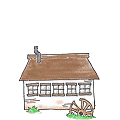I have recently been looking for information on what to plant in my ditches, swales and trails. This is to minimize erosion, provide food and to minimize weeds… I have only seen one topic specific to swales and it seemed to focus on trees. I will use that to help me with that aspect of my issue. But, I would appreciate some info on what others are doing with non tree aspects of planting this part of my current earthworks….
I bought 22 acres 2 years ago and we are finally breaking ground. We have done some massive (to us) earth works to provide a driveway, trails for easier traversal of the hills and to move water away from the to-be-built house/barn&greenhouse and to flow the water to my food forrest on a lower plateau…
Hear are some details:
We are in the Western Finger Lakes region of NY. We have a few plateaus on the property, with steep hills between. There is quite a bit of water running down a pretty steep pitch across the property when it rains. We are building ponds, ditches and swales to slow and coerce the water where we want.The soil is silty with pockets of clay - the hill we are on runs east to west and has a full day southern exposure.. We have a fair amount of rainfall with bouts of dryness. There is a mix of hardwoods , lots of oak and some black walnut, clumps of softwoods and harder evergreens, and a smaller percentage of other species. This is a somewhat mature forrest environment. We had plenty of water sheeting across the hillside when it did rain hard. We just finished the last ditch this week - These feed a larger pond, which flows into a series of ditches, swales and a collection of cascading small ponds stepping down the hillside, ending in my food terraces to be enhanced with hugelkultur beds….
So the questions is what to plant in the ditches, swales and trail? We have two different types of areas. One is along our driveway, the other along the trails we cut across the property to allow us easier access to the other plateaus and the creek at the bottom of the hill.
Here are a few of the things we would like (althought we realize we can have everything!

), as a result of this planting:
Minimize erosionFood sourcesMake it “Pretty” along my driveway, to make my wife happy! Nitrogen fixers& soil buildersPerennial systemsMinimal mow (not easy to get a mower in the various places…)Winter hardy in zone 6A (last year we averaged 12º in feb)Varieties that work/look good together to give me some flowers and/or color throughout the year?We plan on running ducks along the ponds and the trails in a few years, so food for them is also a plus…
Nitrogen fixers& soil buildersPerennial systemsMinimal mow (not easy to get a mower in the various places…)Winter hardy in zone 6A (last year we averaged 12º in feb)Varieties that work/look good together to give me some flowers and/or color throughout the year?We plan on running ducks along the ponds and the trails in a few years, so food for them is also a plus…
The trails and ditches are about 1500 yards long and trails average 12 ‘ wide. So, I cost effective and self seeding would also be helpful.
I know this is a lot to ask, but I am sure many of you have had similar circumstances, and would like to know what has and has not worked for you.
Thanks!
-Rick








